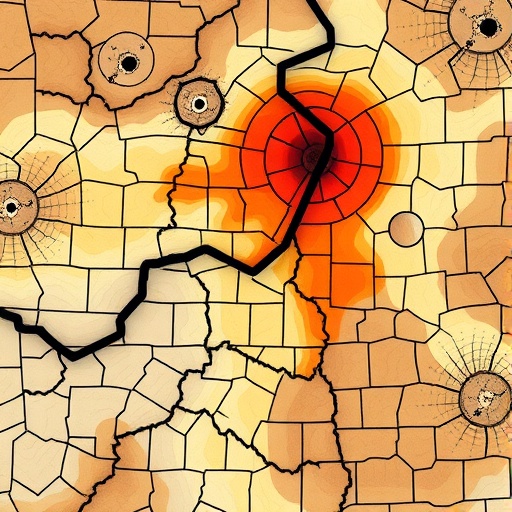Although many ecosystems can weather several years of moderate drought, consecutive years of extreme dryness push them past a tipping point, resulting in dramatic declines in plant growth, researchers report. The findings – borne from a global experiment spanning six continents – reveal threats to Earth’s grasslands and shrublands as climate extremes intensify. Although most droughts are brief and moderate, the most ecologically and economically damaging events are both prolonged and extreme. Evidence suggests such extreme events are becoming more frequent with ongoing climate change. However, the effects of multi-year droughts on ecosystems remain poorly understood. While some studies show cumulative declines in ecosystem functioning over time, others suggest that ecosystems can acclimate, stabilizing their productivity despite prolonged stress.
Here, Timothy Ohlert and colleagues present findings from the International Drought Experiment (IDE), a coordinated multi-year rainfall-exclusion experiment assessing the effects of drought duration and severity on ecosystem productivity in 74 grassland and shrubland ecosystems across six continents. Ohlert et al. found that many ecosystems generally maintained productivity under moderate or less severe, multi-year droughts; although productivity dropped sharply in the first year of drought, they did not continue to decline in subsequent years, indicating ecosystem acclimation rather than cumulative loss. However, extreme droughts (e.g., 1-in-100 year events) resulted in steep and progressively larger declines in productivity as duration increased. The severity of the current year’s drought was the strongest predictor of productivity decline, yet by years three and four, extreme droughts intensified this negative effect. Sites subjected to consecutive extreme drought years experienced the most dramatic impacts, with productivity falling roughly 2.5 times – from 29% in year one to 77% by year four. According to the authors, these cumulative declines are likely due to species mortality, failed establishment, and changes in community composition. “The discovery that the resistance to drought duration of grasslands and shrublands rapidly eroded with prolonged drought of extreme intensity portends an uncertain future for these ecosystems,” Ohlert et al. write, “threatening their long-term stability and the ecosystem goods and services they provide.”
Journal
Science
DOI
10.1126/science.ads8144
Article Title
Drought intensity and duration interact to magnify losses in primary productivity
Article Publication Date
16-Oct-2025
Media Contacts
Science Press Package Team
American Association for the Advancement of Science/AAAS
Josh Rhoten
Colorado State University
Office: +1-720-480-3660
Journal
Science
DOI
10.1126/science.ads8144
Article Title
Drought intensity and duration interact to magnify losses in primary productivity
Article Publication Date
16-Oct-2025
bu içeriği en az 2000 kelime olacak şekilde ve alt başlıklar ve madde içermiyecek şekilde ünlü bir science magazine için İngilizce olarak yeniden yaz. Teknik açıklamalar içersin ve viral olacak şekilde İngilizce yaz. Haber dışında başka bir şey içermesin. Haber içerisinde en az 12 paragraf ve her bir paragrafta da en az 50 kelime olsun. Cevapta sadece haber olsun. Ayrıca haberi yazdıktan sonra içerikten yararlanarak aşağıdaki başlıkların bilgisi var ise haberin altında doldur. Eğer yoksa bilgisi ilgili kısmı yazma.:
Subject of Research:
Article Title:
News Publication Date:
Web References:
References:
Image Credits:
Keywords
Tags: climate change effects on grasslandsdrought duration and severity researchecological consequences of extreme droughtsecosystem acclimation to droughtextreme weather and ecosystem stabilityglobal drought trends and implicationsgrassland and shrubland ecosystem healthInternational Drought Experiment findingsmulti-year drought resilience mechanismsprolonged drought effects on plant growthsevere drought impacts on ecosystemsterrestrial productivity decline





